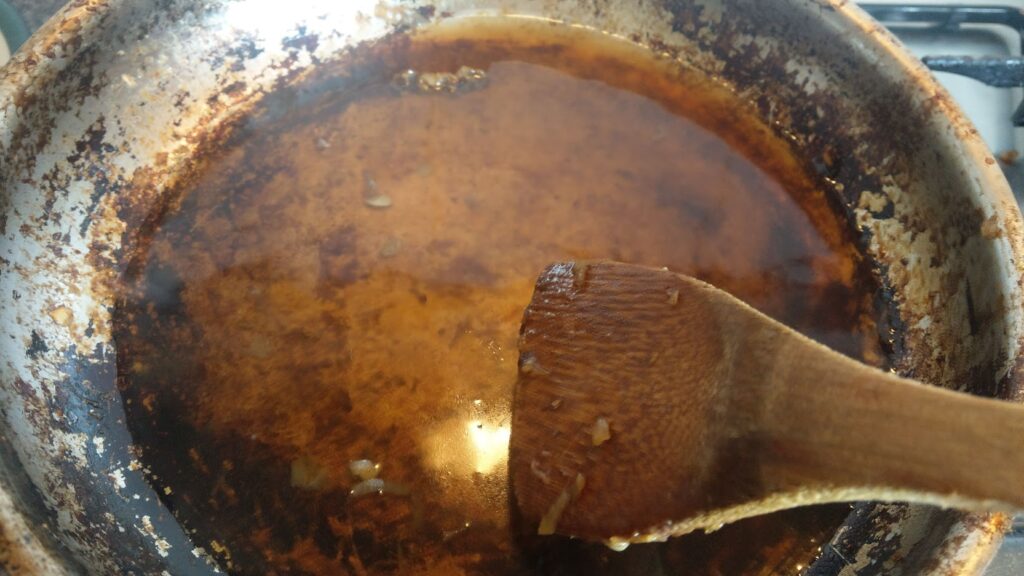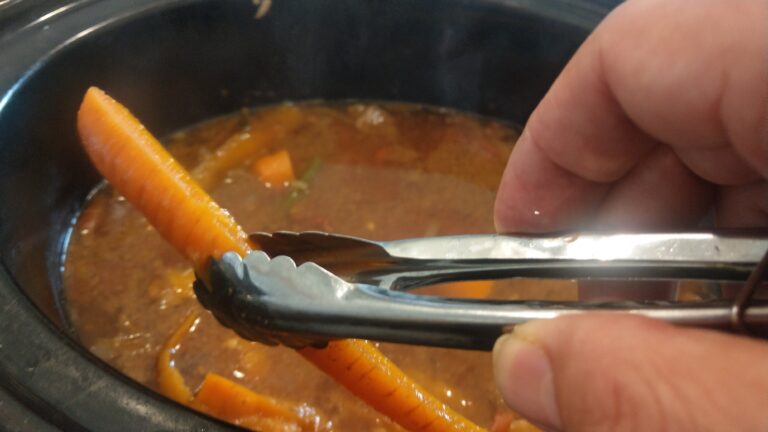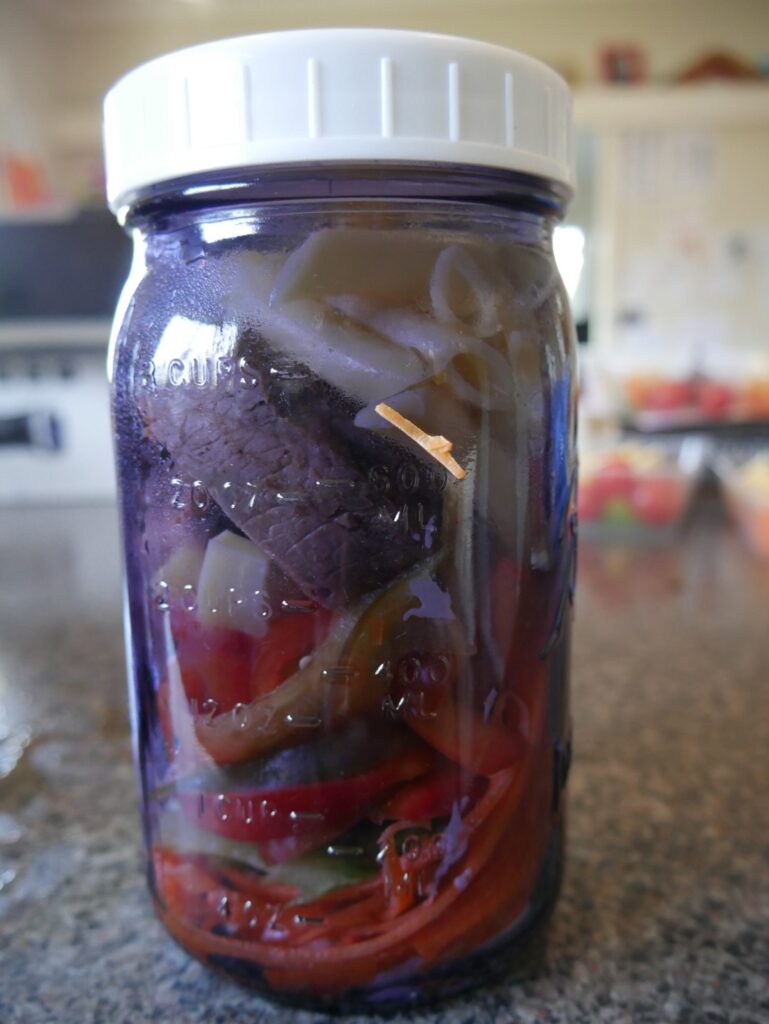There is no such thing as a recipe for “The Best Bolognese”. The best Bolognese recipe is the one that you cook and you like. This is my favourite over 20 years (geeze – I feel old now) of experimenting with all different variations that I have gleaned from different recipes and friends. Remember – don’t be afraid to experiment and try something new.
Ingredients
Serves about 6
Vegetables (Add more or less as you desire)
- 2 brown onions – diced
- 2 stalks of celery – diced
- 2 carrots – diced
- 1 red capsicum – diced
- 2 zucchini – diced
- Handful of Button mushrooms – diced (optional)
- 2-8 cloves of garlic to taste – minced
The rest
- 1kg beef mince
- 1L beef stock (extra points for home made beef stock)
- 750gms Passata
- 2tbs Worcestershire sauce
- 2 bay leaves
- 2tsp dried oregano
- 1tsp dried thyme
- Pepper
- 500gms dried pasta
- 4tbs of cooking oil (vegetable/canola/olive oil)
- Cheese to serve – parmesan for the traditionalists/any other hard cheese of choice for the commoner
Method
Clean bench, sharp knife, stable cutting board – let’s go:



1. Heat 2tbs of the oil in a large fry pan on medium high. Add the mince and break apart the lumps. Cook stirring occasionally until the beef is dry and crumbly, starting to catch at the bottom and smell like cooked steak. If this step is done before the vegetables are soften; turn off the heat

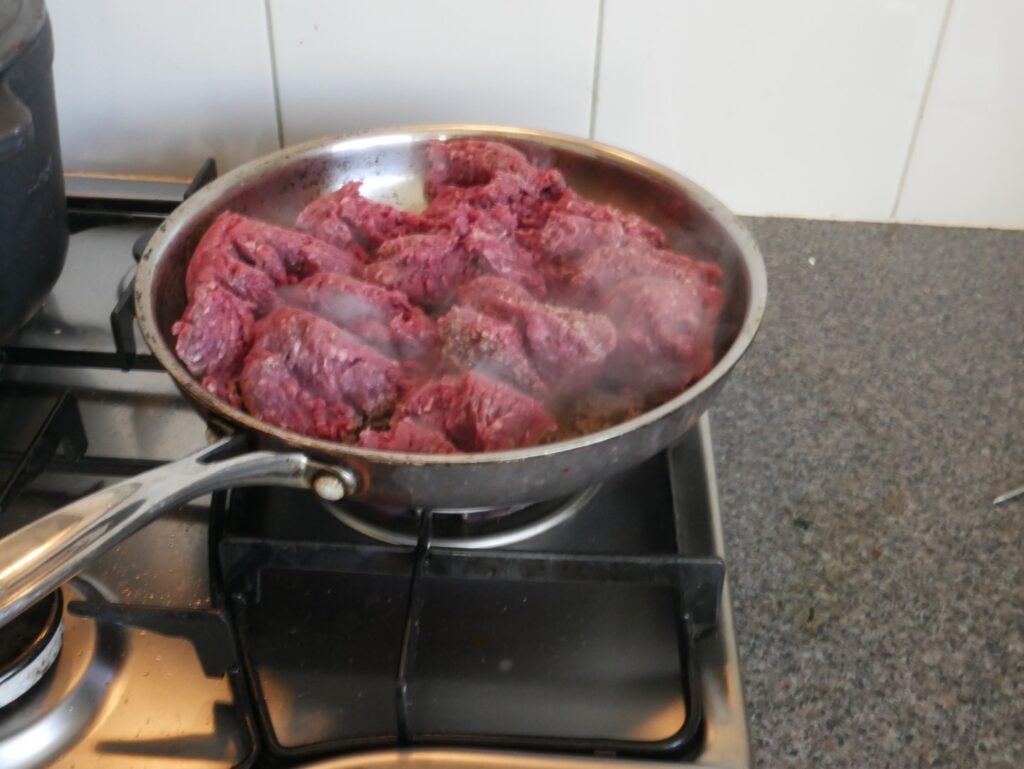

2. In a large pot; heat to medium heat and add the remaining cooking oil. Add all the vegetables; except for the garlic and fry until the vegetables are soft and the onion is translucent. Add the garlic and fry for another two minutes.


3. Add the browned mince to the large pot of vegetables. Deglaze the fry pan with a cup of beef stock. Add the liquid into the large pot.


4. Add the beef stock, passata, Worcestershire sauce, bay leaves, dried herbs and pepper to the large pot and bring to a boil. The mixture will appear very watery; almost like a soup.
Turn down the heat to a very low simmer and cook for 3 – 6 hours stirring occasionally. Adjust the heat and liquid levels depending on how long you want to cook it for.
Hold off on seasoning with salt until the end as the amount of salt you will need depends on the amount of salt that was in the beef stock and passata.

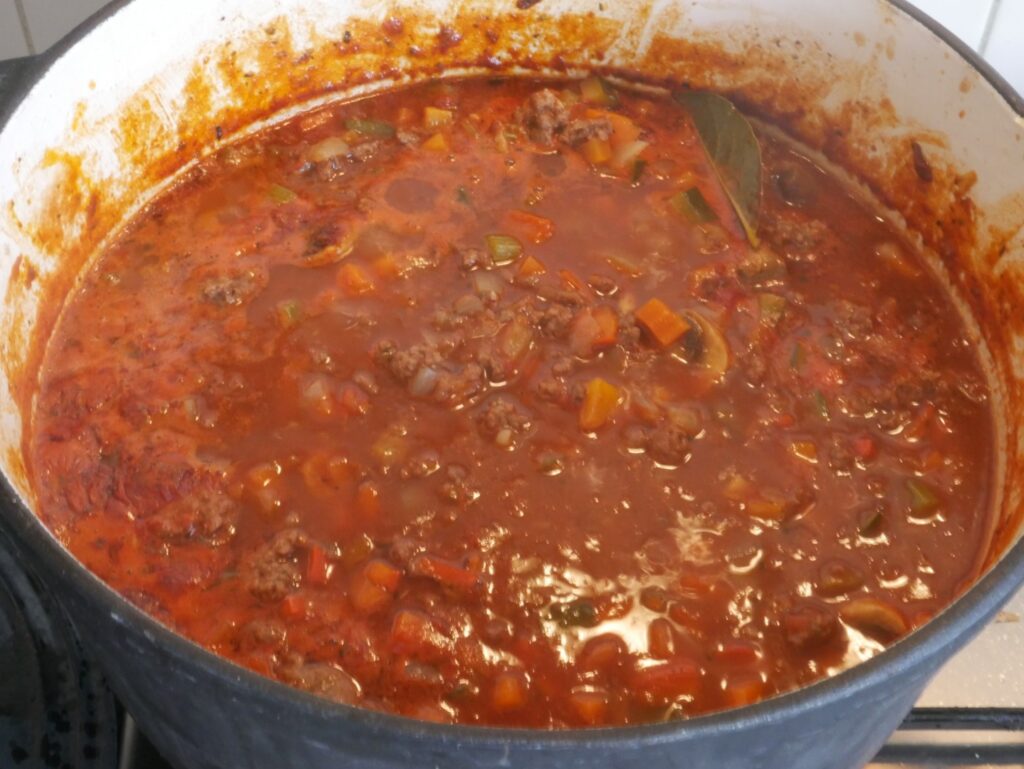

5. When getting close to the right consistency; cook the pasta as per the packet instructions.
Way to serve – fancy way
- Undercook the past by a couple of minutes in step 5
- Heat up a large pot to medium heat and add in the well drained pasta
- Add some of the Bolognese sauce into the pot.
- Cook for a couple of minutes until the pasta is cooked through.
- Serve with chese
Way to serve – to the point way
- Pasta in the bowl
- Bolognese sauce on top
- Cheese on top

Notes
There are many/many variations of Bolognese out there and I have tried and honed my favourite recipes over many years.
It all comes down to what you like – that is the best Bolognese recipe
To me a good Bolognese has the key balance between tomatoes and meat flavour.
I have tried some popular variations and added some notes:
Wine
A popular addition is to add wine to the recipe. This radically changes the flavour profile.
I’m not a big fan of it.
I suspect that it is because I usually have strongly flavoured Australian Shiraz or Cabernet sauvignon on hand. Maybe a lighter red wine would be a suitable match.
Meat
Minced beef is the most popular ground beef in our region so that’s what I tend to use.
Veal and pork is a more traditional choice. If this is what you want to try; see if you can get some pork or veal stock. This will create a lighter sauce and better match for the meat combination.
Some people also add bacon or speck to their Bolognese recipe. This drastically alters the flavour and I am not a fan of it. But if not sure; give it a go as an experiment
Milk?
I have seen recipes where you add half a cup of milk to the Bolognese sauce. The theory is the the enzymes in the milk further tenderises the meat. I have tried it but felt it made no noticeable difference
Sugar
Some recipes add a couple of teaspoons of sugar to the sauce to balance out the acidity of the tomatoes. I think it depending of the quality of the passata and your own personal preference. Taste the sauce at the end of the cooking process and assess the taste profile of the tomatoes to see if it needs some sweetening.
Extras
- Dried red lentils gives the recipe a nuttier taste and stretches the recipe further. Well worth it if you have more mouths to feed on a budget.
- You can add more or less vegetables as you wish. If you add more vegetable; or grate them up finer to hide them from kids – you will compromise on the meat and tomato flavour.
Happy cooking







